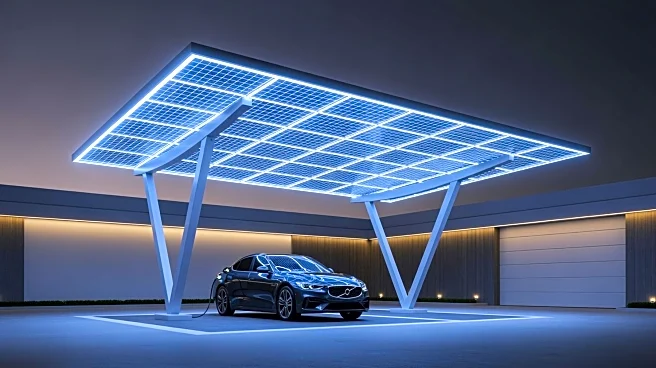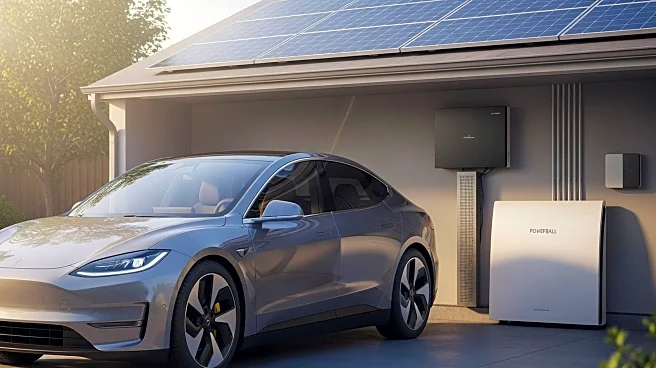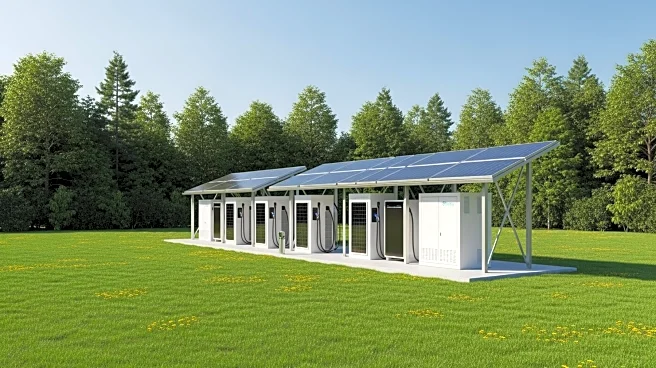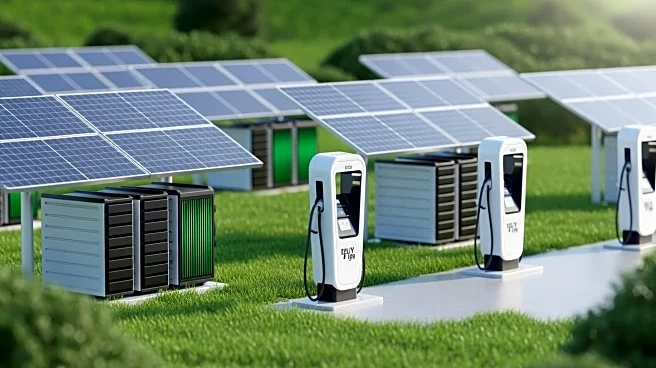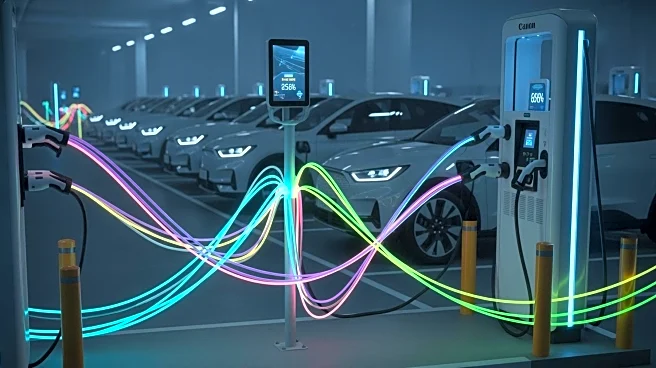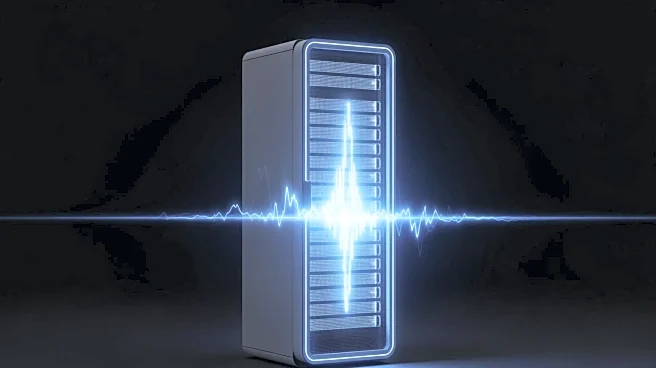What's Happening?
A Tesla owner has shared a surprisingly low electricity bill for charging their electric vehicle over a 12-month period, sparking disbelief among observers. The owner managed to keep the costs down to just
$2.37 by utilizing solar panels and a Tesla Powerwall, a rechargeable lithium-ion battery that stores energy from solar or the electricity grid. This revelation comes amidst rising fuel costs, with petrol and diesel prices significantly higher. The Tesla Powerwall, which starts at around £5,000, allows users to store energy for later use, providing energy security and financial benefits. The cost of installing a standard electric vehicle charging outlet can range from £500 to £1,000, while charging costs vary depending on the method used.
Why It's Important?
The low electricity bill highlights the potential cost savings of using renewable energy sources like solar power for electric vehicle owners. As the automotive industry shifts towards electric vehicles, the financial benefits of solar energy and energy storage systems like the Tesla Powerwall become increasingly significant. This development could encourage more consumers to invest in renewable energy solutions, potentially reducing reliance on traditional energy sources and lowering overall energy costs. The story also underscores the importance of energy-efficient technologies in reducing the environmental impact of transportation.
What's Next?
As more consumers become aware of the cost benefits associated with solar energy and energy storage systems, there may be increased demand for these technologies. This could lead to further advancements in renewable energy solutions and potentially lower costs for consumers. Additionally, energy companies and policymakers might explore incentives to encourage the adoption of solar power and energy storage systems, further promoting sustainable energy practices.
Beyond the Headlines
The use of solar energy and energy storage systems like the Tesla Powerwall raises important questions about the future of energy consumption and sustainability. As more individuals and businesses adopt these technologies, there could be significant shifts in energy infrastructure and policy. This trend may also influence the development of smart grid technologies and the integration of renewable energy sources into the national energy grid, promoting a more sustainable and resilient energy system.
